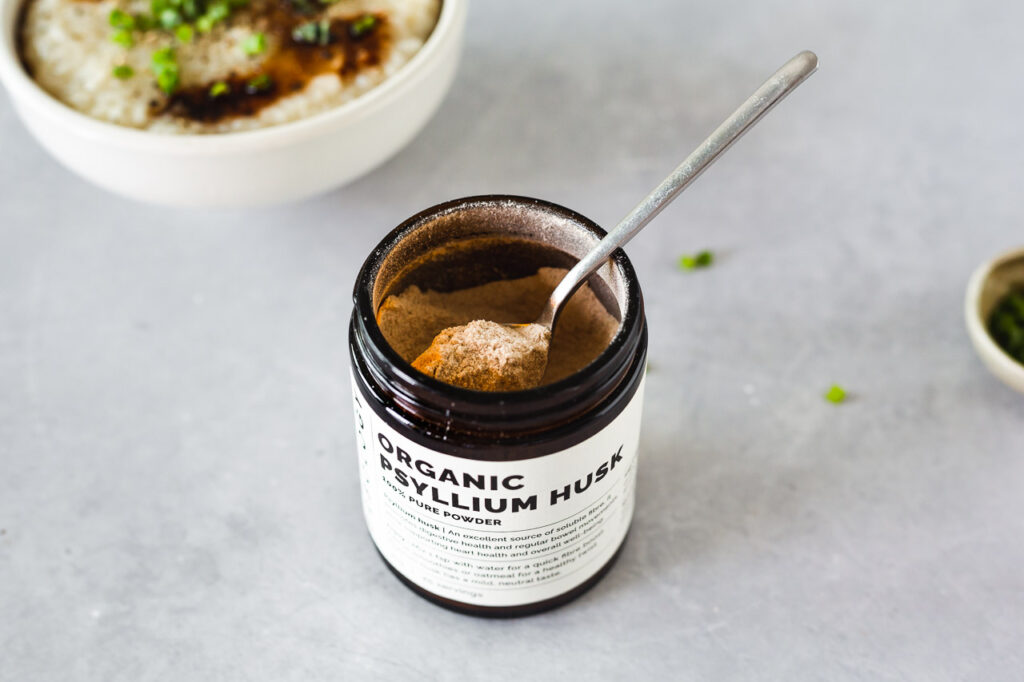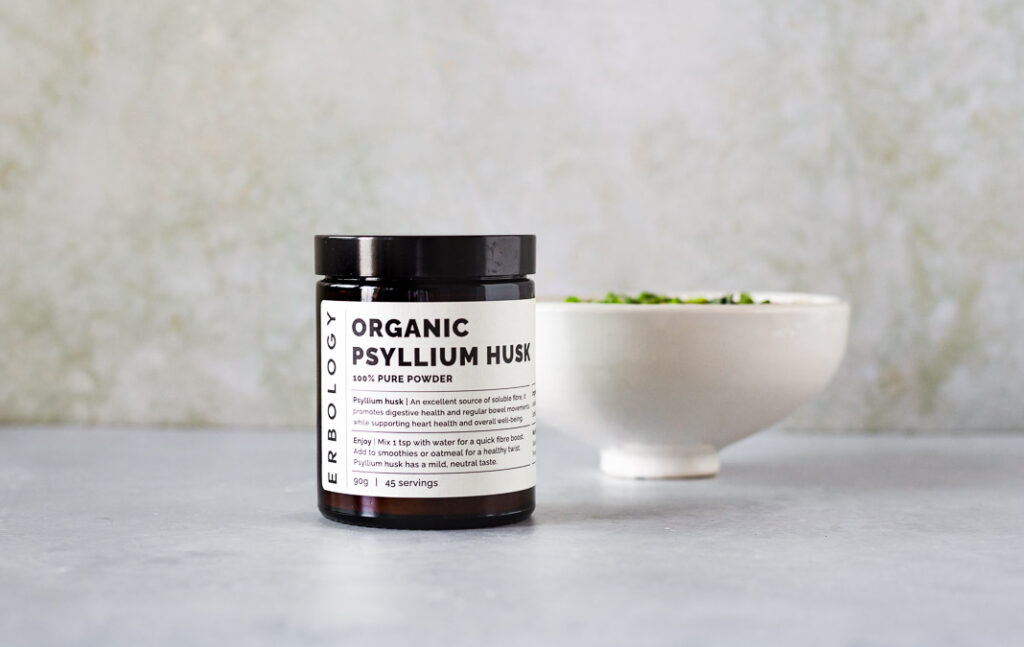Vegan congee recipe
- 3

undefined 5'

undefined 65'
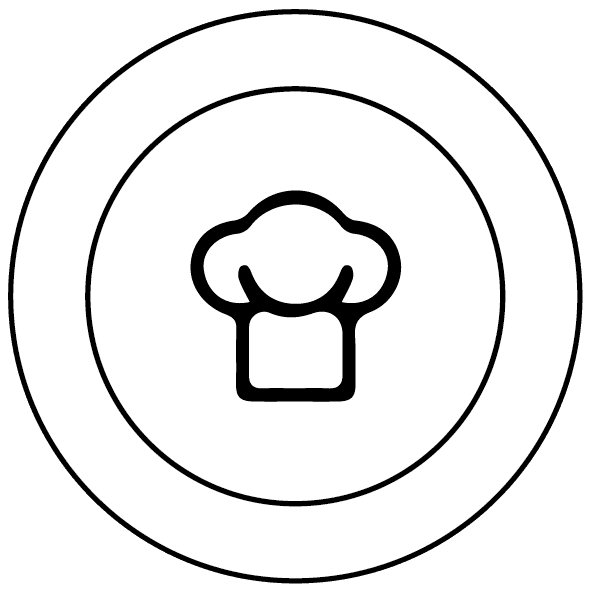
undefined

undefined
- 3

undefined 5'

undefined 65'

undefined

undefined
What is congee?
In case you’re not familiar with the dish, let’s first look at what congee is. Then we’ll move on to the details of how to make this vegan congee recipe.
Also known as Chinese rice porridge, congee is a classic comfort meal that people enjoy all across the world. There are many types of congee recipe out there, which isn't surprising given how easily you can customize it. However, they all involve cooking rice in a large amount of water until it breaks down and forms a pudding-like consistency. You’re then able to flavor this in all sorts of different ways – both savory and sweet – depending on your preferences.
Like other kinds of porridge, congee is especially popular as a breakfast food. Many people also consider it to be a good meal when you’re feeling unwell. This is because it’s simple to make, easy to digest, and deliciously nourishing. Not to mention, a congee recipe often includes ingredients like ginger and garlic, which boast impressive health-boosting properties. More on those later!
In addition to being beneficial for your wellbeing, a vegetarian congee recipe is generally quite inexpensive to make. The main ingredients – rice and stock – are fairly cheap, and you can add almost any toppings to them depending on what you have to hand. Plus, cooking rice in a congee recipe makes the grain go further than it otherwise would.
Yet congee is much more than an economical dish for times when you’re feeling under the weather! With countless flavor possibilities and a unique texture, a congee recipe makes a delicious and deeply satisfying meal any day. A lot of this is thanks to the rice itself. Time to find out why.
Rice: the crucial base of any congee recipe
Rice is a staple food all around the world, and it’s the key ingredient in a range of different dishes. There are many varieties to choose from, which vary in length and colour to produce unique textures and tastes. Happily, for this congee recipe, you can use pretty much any type of rice you want. While long-grain white rice is perhaps the most common choice, brown rice and short-grain rice are both great alternatives.
In fact, if you’re hoping for the maximum health benefits, we recommend using brown rice in your congee recipe. That’s because brown rice is a whole grain, and therefore contains more fiber and nutrients than white rice. It also has a lower GI index, meaning it will provide a steadier source of energy.
Studies show that consuming whole grains, like brown rice in this congee recipe, can support your wellbeing in several ways. For example, it may reduce the risk of conditions such as cardiovascular disease and type 2 diabetes.(1) This protection might be in part due to the antioxidants brown rice contains in its bran layers, such as lignans. These powerful compounds help to decrease inflammation and defend our cells against oxidative stress. Brown rice is additionally high in magnesium, a mineral that’s vital for heart health.
Using brown rice in a congee recipe could also be a good choice to assist with healthy weight management. One reason for this is that it’s rich in fiber, which increases feelings of satiety. Indeed, studies have linked eating whole grains like brown rice with a lower risk of weight gain and obesity.(2)
Ready to give this wholesome dish a try? Here's how to make it.
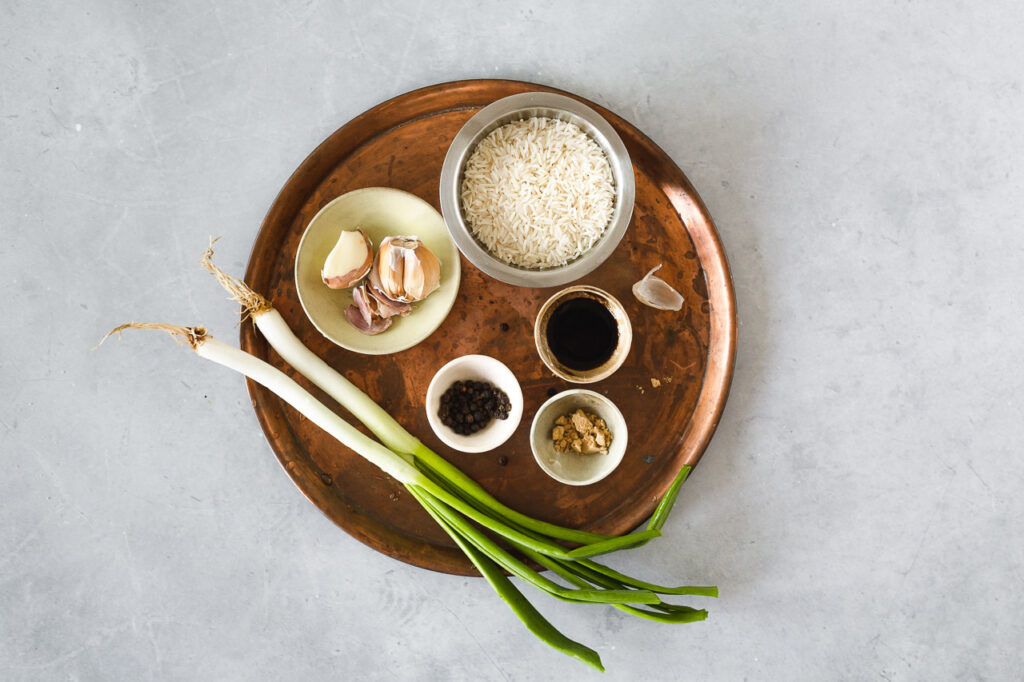
How to make this vegan congee recipe
The first step in any congee recipe is to wash your rice. This helps to remove any dust or debris, as well as excess starch. Then pop it into a large saucepan. We’ve suggested using basmati rice in this congee recipe, but feel free to use another variety if you prefer. Next, pour in your vegetable broth and an extra 650ml of water. Remember, you can adjust the amount of water you use to achieve a thicker or thinner consistency in the dish.
Add one garlic clove and half a teaspoon of ground ginger, plus a pinch of sea salt and black pepper. Give the mixture a stir, and simmer on a medium heat for about an hour. Keep an eye on the pan, stirring occasionally to prevent the rice at the bottom from scorching. Alternatively, you can make your congee recipe in an instant pot or rice cooker for a more hands-off approach.
Once your congee recipe has thickened up nicely, it’s time to sprinkle in the psyllium husk powder. We’ll talk more about this special ingredient below! Stir until the powder is fully blended into the dish. Your congee recipe should now have a velvety smooth and creamy texture, and be ready to plate up.
Spoon your desired amount into serving bowls before moving on to the garnishes. As this is a Chinese congee recipe, we’ve recommended using spring onions, soy sauce and black pepper. Like always, you can alter the quantity you use of each to suit your taste. Of course, you’re welcome to mix things up with different toppings – keep reading to the end for some more inspiration! Tuck in while your congee recipe is fresh and warm.
The spices adding flavor and health benefits to your congee recipe
We mentioned above that many people choose to cook an easy congee recipe when they’re not feeling at their best. And this particular version contains three specially chosen spices that can both enhance the dish’s taste and boost your wellbeing.
Starting with garlic, research shows that this potent plant has impressive antiviral properties, helping to support the immune system.(3) What’s more, adding garlic to a congee recipe could be good for your heart. Studies suggest that it might be as effective as medication at lowering blood pressure.(4) It can also relax blood vessels and improve blood flow, further lessening the risk of heart attack and stroke. This may be one reason why researchers have discovered that people who consume garlic live longer!(5)
Moving on to ginger, this spice is perhaps best known for its ability to alleviate nausea. In fact, some studies have found that it may be as effective as anti-nausea medication – but with fewer side effects.(6) Ginger can also ease other digestive issues, including improving indigestion by speeding up the passage of food through the stomach.(7) Moreover, adding ginger to your congee recipe could support healthy weight loss and even help reduce belly fat.(8)
Finally, we come to black pepper. Thanks to an active ingredient called piperine, this spice possesses potent antioxidant and anti-inflammatory properties.(9) Using it in a congee recipe might therefore be able to decrease the risk of some chronic health conditions. There’s even a chance piperine could improve symptoms of degenerative brain diseases, however further investigation is necessary to clarify this.
Now let’s examine the most unusual ingredient in this congee recipe: psyllium husk. You’ll soon see why we’ve included it!
Psyllium husk: the secret ingredient in our congee recipe
Psyllium husk is the unique addition to this congee recipe that takes its wellness benefits to the next level. In fact, this humble powder might just become your digestive system’s new best friend!
Psyllium husk is rich in fiber, and using it in a congee recipe can benefit your health in several ways. First, it acts as a prebiotic, nourishing the good bacteria in your gut microbiome.(10) This is key for many reasons. Not only does the gut microbiome influence digestion, it also affects the functioning of the immune system. That’s because lots of your immune cells are located in the gut. What’s more, the gut microbiome has an impact on your mood and the health of your brain.
Looking more specifically at the digestive system, psyllium husk can help to relieve conditions like constipation and diarrhoea.(11) It does so by soaking up water in the gut and making bowel movements easier and more regular. Putting the powder in a congee recipe could also be useful for people who suffer with digestive conditions such as irritable bowel syndrome (IBS). Psyllium husk may additionally support healthy weight management by slowing the emptying of the stomach and increasing feelings of fullness.(12)
Interestingly, including psyllium husk in a congee recipe could benefit your heart too. For example, research indicates that it might work to lower levels of cholesterol in the blood.(11) This is important because cholesterol can build up on the walls of your arteries and limit blood flow. In turn, that increases the risk of blood clots, heart attacks, and strokes. Finally, the powder may also help with blood sugar management, which is particularly useful for people who have diabetes.(13)
Introducing our organic psyllium husk powder
We source the psyllium husk we’ve used in this congee recipe from producers in India. They make it using the outer coating of the seeds of the Plantago ovata plant, also known as ispaghula. Our team uses only sustainable and organic techniques to cultivate the plants, so rest assured that no chemicals were involved. And of course, we don’t add any filler ingredients or other unwanted extras to the mix. What you receive is 100% pure organic psyllium husk powder. We ship this out in environmentally friendly amber jars, which you can then reuse or recycle once empty. Be sure to store your psyllium husk powder in a cool, dry place to keep it fresh.
Psyllium husk powder has a mild, earthy flavor with nutty undertones. As such, it blends well with all kinds of food and drink. In addition to this congee recipe, you might like to try mixing a teaspoon into oatmeal or your favorite smoothie. Or if you’re after a quick fibre boost, you can simply stir some into a glass of water or juice.
Those who have an existing health condition or are on pharmaceutical medication should seek medical advice before taking psyllium husk. This is because it can affect the absorption of some medications. Likewise, if you are pregnant or breastfeeding, we recommend consulting your doctor before adding psyllium husk to your diet. And, as with most functional foods, you shouldn’t give psyllium husk to children before checking with a medical professional.
Adding psyllium husk to a congee recipe, smoothie, or oatmeal can be an effective and natural way to banish tummy troubles. Not bad for a humble seed!
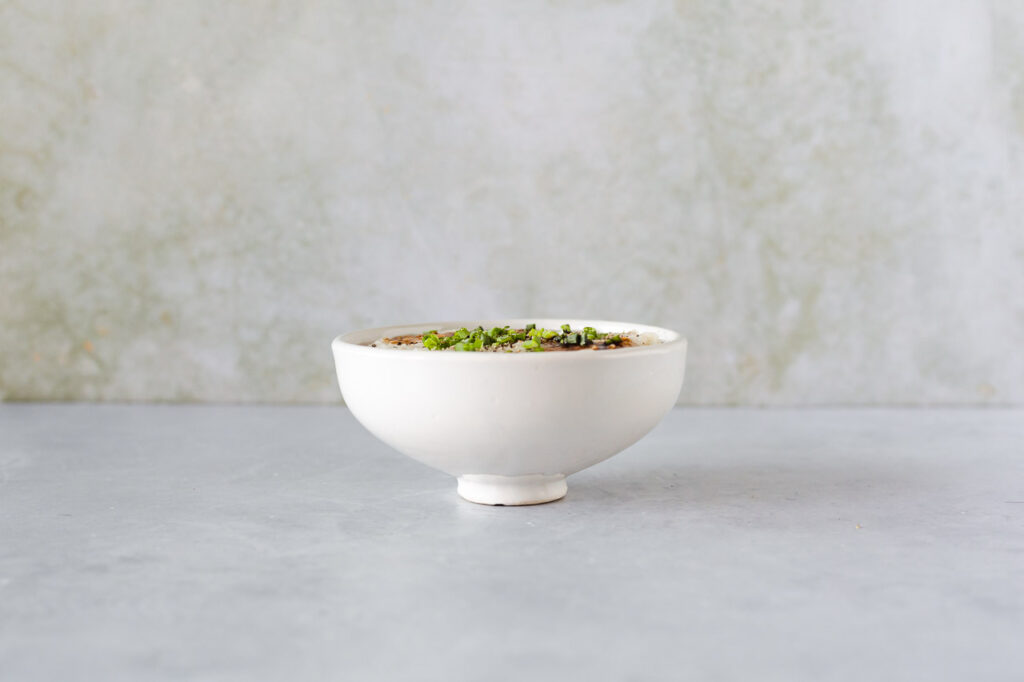
Making this the best congee recipe for you
There’s a lot to love about this dish. It’s wholesome, simple to make, and delicious. Plus, it’s easy to customize to suit your preferences. While the meal we’ve described above is a savory Chinese congee recipe, you can switch up the seasonings and other ingredients to create an entirely different version of it.
For example, you could cook a more filling vegan congee recipe by adding tofu, mushrooms, and vegetables to the dish. Alternatively, instead of ginger and garlic, you could season the meal with lemongrass, coriander, sesame oil, or chilli. In terms of garnishes, dried strips of seaweed, sesame seeds and peanuts are all great choices for a congee recipe.
If you want to really mix things up, why not try making a sweet congee recipe? Start with the same basic method, but instead of vegetable stock, use coconut milk or another plant-based option. Then you can add dried fruit like apricots and dates, cinnamon, chocolate chips, or coconut flakes for more flavor. Fresh berries are always a fabulous choice, or you could go for more tropical vibes with a fruit like mango. A drizzle of maple syrup or agave nectar adds extra sweetness, or you could swirl in your favorite nut butter.
We encourage you to have fun with this congee recipe and create your own versions of the dish. That way, you’ll have a range of styles in your repertoire that suit different occasions and perfectly match your tastes. All while still being good for you!
- 90g basmati rice
- 350ml vegetable broth
- 650ml water
- 1 clove garlic, peeled
- ⅛ tsp sea salt
- ½ tsp ground ginger
- ⅛ tsp black pepper + ¼ tsp for topping
- ½ tsp Erbology Organic Psyllium Husk Powder
- 3 tsp spring onions, finely chopped
- 3 tsp soy sauce
- Serv. size: 375 g
- Calories: 125 kcal
- Total Fat: 1 g
- Total Сarbohydrate: 26 g
- Protein: 2.8 g
- Add the basmati rice to a pot. Add the vegetable broth, water, garlic, salt, ginger and black pepper and mix.
- Bring to a boil, then simmer on low for about 1 hour, stirring from time to time. If the congee seems too thick, add 50-100 ml more water.
- Turn off the heat and add the psyllium husk powder. Mix quickly to dissolve.
- Pour into serving bowls and top with spring onions, soy sauce and black pepper. Enjoy!
